Barcelona has long been considered one of the most captivating cities, and it continues to draw travelers from all around the globe. It never fails to surprise you, regardless of whether it’s your first or tenth visit, and likely a more extended stay will still only scrape the surface.
It’s the second-largest city in Spain and was initially founded by the Romans. With its awe-dropping art and architecture, it’s an ideal travel destination for history lovers. While it’s a playground for artists and architects, Barcelona is also famous for its Catalonian dishes, colorful buildings, exciting nightlife, and beautiful beaches perfect for lounging the day away.
Exploring Barcelona is a once-in-a-lifetime experience, so go ahead and book that flight! Whether you’re looking for the best area to stay in Barcelona for nightlife, history, on a budget, or as a family, it’s all below.
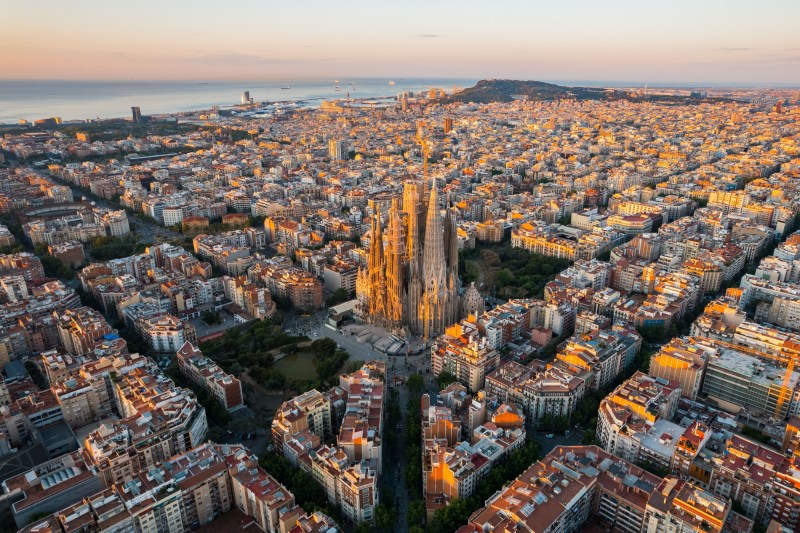
L’Eixample
The Eixample was built after the old city center’s medieval walls were torn down in the nineteenth and twentieth centuries. This area is known for elegant five to seven-story buildings flanked by wide streets and tree-lined avenues.
The Eixample is where most of Barcelona’s famous Modernista buildings are located, including Casa Batlló, La Pedrera, the Sant Pau Art Nouveau Site, and the world-famous La Sagrada Familia. La Sagrada Familia is truly one of the most unique experiences and should not be missed on a Barcelona trip. Also, this area is where many of the city’s luxurious restaurants, markets, and hotels are located.
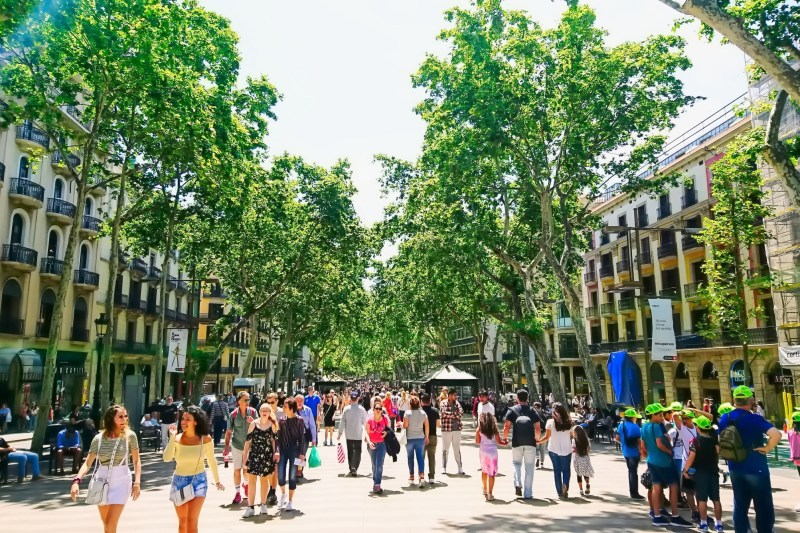
Gràcia
Gràcia is a lovely place to stay in Barcelona with its idyllic pedestrian lane, famous 19th-century cinema, and boutique galleries. Once a separate village, it has kept its small-town charm and a bohemian vibe that you will enjoy, especially in squares like Plaça del Sol.
Traditional Catalan cafes and wine bars make for an authentic evening out. You have the perfect backdrop anywhere you walk with architecture by the famous Antoni Gaudí. Gràcia moves to a more serene and chill rhythm, so it’s an ideal escape when you need a break from the busier areas. In terms of hotels, it’s the perfect area to book if you want a room with a view.

Poblenou
The area Poblenou is known for being ahead of its time and offering a glimpse into the future of Barcelona. It’s where former factories have been turned into tech offices and hip tapas bars where all the local Barcelona trendsetters mingle.
As a visitor, you will find no shortage of sights and things to do in this area. Most notably are the Plaça de Les Glòries Catalan, Els Encants flea market, and Barcelona Design Museum. Another unique sight is the Torre Agbar skyscraper, designed by Jean Nouvel. For those that are a fan of dark tales, schedule a guided tour at the Cementiri de l’Est, the oldest cemetery in the city. If you are traveling with children, stop at one of the vendors and sample some of the best ice creams in the city, followed by a trip to the nearby Parc Central del Poblenou.
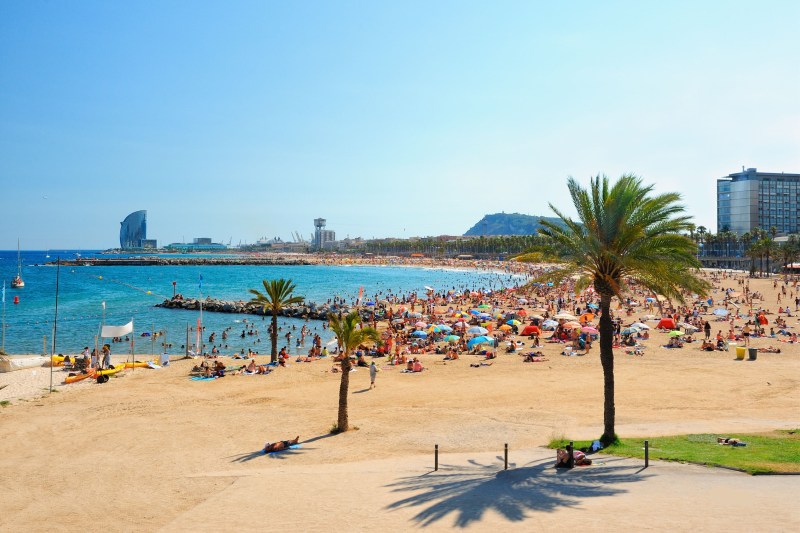
Barceloneta
The seaside neighborhood of La Barceloneta was originally a fisherman’s quarter and is now a popular local spot for sunbathing and fresh seafood tapas. You will find narrow winding streets, charming balconies, and a palm-lined promenade leading to the beach for the best photo-worthy view. Wander throughout Parque de la Barceloneta, an ample green space at the heart of the city, or explore the remains of the medieval walls built to protect Barcelona between the 12th and 14th centuries.
It’s the perfect destination for beachgoers with its multitude of beach clubs and the area’s four main beaches. You have the family-friendly Barceloneta beach, modern Sant Sebastià, and the quieter Somorrostro and Sant Miguel beaches. It’s is also one of the best areas to stay in Barcelona families. Visit the Barcelona Zoo or marvel at the more than 11,000 animals on display at the L’Aquarium de Barcelona if traveling with kids.
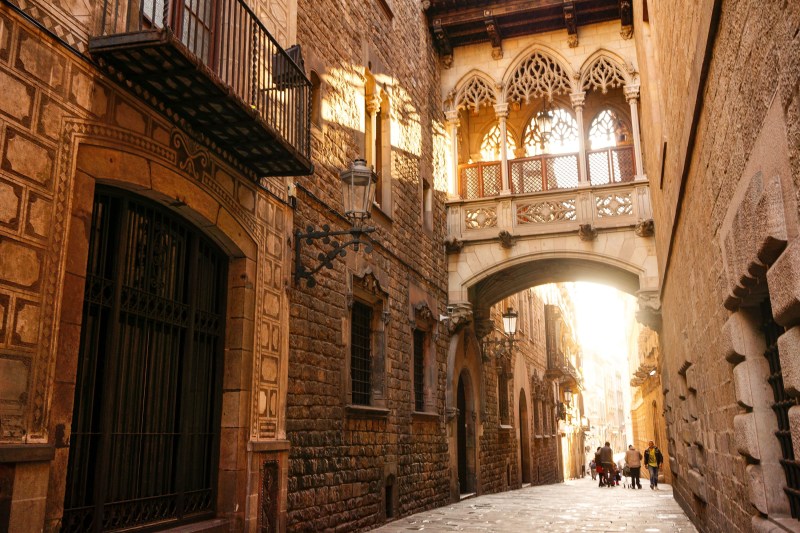
Barrio Gotico
Barrio Gotico, otherwise known as the Gothic Quarter, is Barcelona’s heart and soul. The best area to stay in Barcelona for first-time visitors is among its narrow cobblestone streets, picturesque boroughs, and charming terraces.
Popular attractions are the landmarks such as the Pont Gòtic on Carrer Bisbe, the plaza Placa Reial, and the impressive Gothic Cathedral. You also have the Museu d’Historia de Barcelona, which has artifacts predating the Roman settlement. Lastly, you have the unique and colorful architecture at Guell Palace.
The most notable attraction is the Avenue La Rambla, Barcelona’s most famous boulevard. It’s full of shops and stalls of local artisans, and you can sample popular Catalan street food from many vendors. The Spanish poet Federico García Lorca said that it’s “the only street in the world which I wish would never end.”
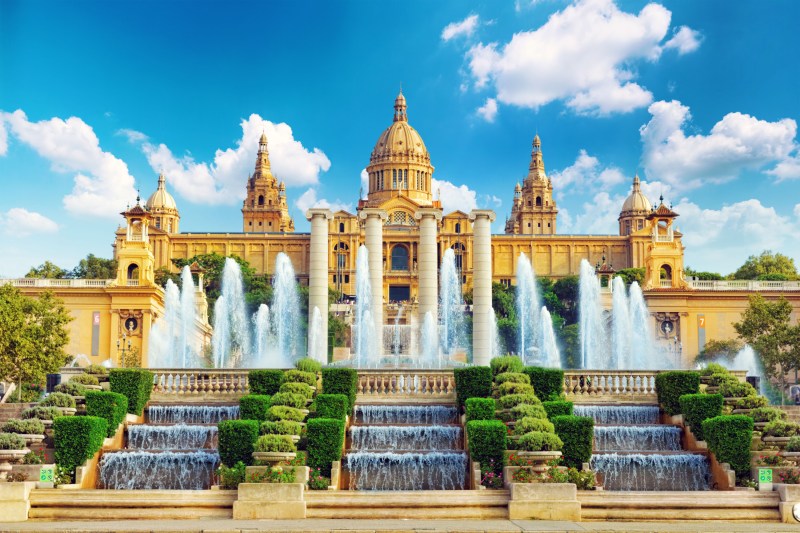
Montjuic
Montjuic is a large neighborhood south of the center of Barcelona and is located along the coast of the Mediterranean. It’s where you’ll find a great variety of monuments, museums, and gorgeous natural landscapes, making it a great escape from the city.
This area features the Museu Nacional d’Art de Catalunya, which houses one of the best collections of Romanesque art in the world. Montjuic is also the area where the 1992 Olympics were held. You can explore Montjuic Castle and enjoy panoramic views of Barcelona or stop and be in awe of the flowers at the Jardin Botanico de Barcelona. Lastly, wander the aisles of the authentic Catalonian market Mercat de le Flors. This market has many unique and exciting food, drinks, and treats.
It’s an easy walk to the city center and has many options for budget accommodations, so definitely one of the best areas to stay when on a budget. This Barcelona district has something for travelers of all styles, ages, and budgets, from backpacker hostels to boutique hotels.

El Born
El Born is our pick for the best area to stay in Barcelona for nightlife with its numerous restaurants, bars, cafes, and clubs. From sipping vermouth in a cafe or partying until dawn, there’s a lot of fun on El Born’s streets.
This area was previously known as one of the city’s most dangerous and grungey parts. Over the last 30 years, it has shed this complex character and transformed into one of the city’s most lively and atmospheric areas. It’s a great area to be in for daytime and nightlife excitement.
With its mesmerizing mix of historic buildings, churches, shops, and galleries, El Born is also an ideal place to stay in Barcelona for those seeking history and cultural experiences. Most notable are the Parc Ciutadella, Palau de la Musica Catalana, and museums such as the Museum of World Cultures, Picasso Museum, and the Chocolate Museum.

El Raval
El Raval is the area for you if you want to be surrounded by art and culture and are looking for a hip vibe. It’s known as the city’s most colorful district. It is full of bohemian shops, trendy restaurants, and a fantastic live music scene.
Two attractions we recommend seeing are the Museo d’Art Contemporani de Barcelona and the prominent market La Boquería. This is one of the largest and longest-running markets in Europe, with roots that go back to the 13th century. It features everything from freshly cured meats and seafood to fruits and sweet delicacies. It is the perfect place to also people watch. El Raval is an area that is lively, vibrant, and just bursting with pop culture and a must-see on any Barcelona trip.
Whether you’re looking to be in the middle of the action and nightless or soak up the sun and embody the beach life, Barcelona has plenty of areas for things to do and see. If you’re still unsure where to stay in Barcelona, our top pick for a hotel is the Majestic Hotel and Spa. And read our Barcelona travel guide for more tips.




